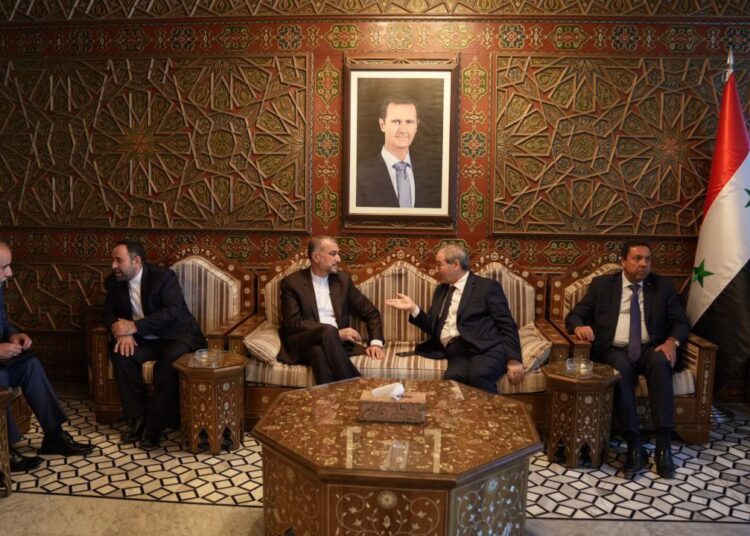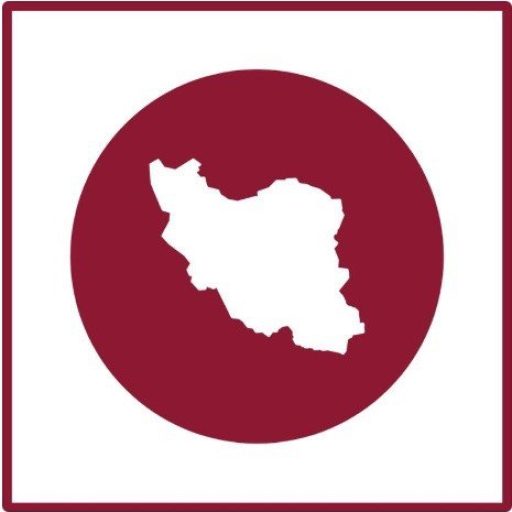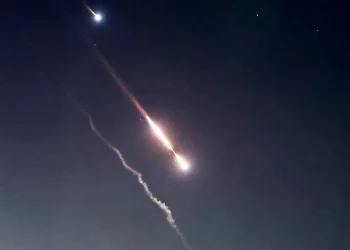The fresh uptick in the rapport between Iran and Syria is no surprise and extends the recent diplomatic dialogues and consultations exchanged between Tehran and Damascus. It is scarcely surprising at all that both countries have striven to distil their bilateral relations into multilateral alliances, capable of addressing a broader range of regional concerns.
Indeed, the reinstated ties between Syria and other regional players, alongside negotiations between Syria and Turkey, bilateral and regional diplomatic discourse between Iran and Saudi Arabia, and the military exhibitions and overt provocations inflicted by the US and Israel on Syrian soil, have all amalgamated to forge a shared platform of concerns for Tehran and Damascus. The re-emergence of terrorist factions has simply underscored these complexities. These topics, accordingly, have dominated the interchanges between Iranian and Syrian officials in recent months, prominently surfacing during the consultations of the Iranian Foreign Minister in Syria.
Notably, a consensus view contends that the frail economic bonds constitute the veritable Achilles heel of the Iran-Syria dynamic. There’s a domestic critique in Iran suggesting the country’s substantial human, political, and military investments in Syria’s fight against terrorism have hardly been matched by the expected economic windfalls in the aftermath of the Syrian conflict. To this end, Iran and Syria have prompted a surge in economic consultations in recent times. Both capitals consistently underscore that numerous delegations have been exchanged to execute economic pacts spanning several domains at both the macro-governmental and private tiers.
However, beyond amplifying their political and economic ties, Iran and Syria grapple with multifarious predicaments, inclusive of their relations with other regional and non-regional players. Syrian war fragmented the Middle East into disjointed fronts, whereby Iran, Syria and Russia were opposed by an assortment of regional parties helmed by Saudi Arabia, the UAE, Qatar, Turkey, and extra-regional forces led by the United States.
That said, signs of amelioration have started to manifest across regional relations due to the resolve of respective capitals to restore diplomatic ties. Yet, the dwindling political clout of the US in the Middle East, coupled with escalating tensions between the US, Russia and China, signify a fresh quandary for Syria and the surrounding region. Indeed, Syria’s geostrategical significance in the Mediterranean Sea, along with Iran and Russia’s political and military stakes, China’s vested interests, and Syria’s political frailties—coupled with its economic and security risks —have all seemingly offered the US the opportunity to shift the locus of action to Syria.
Close scrutiny exposes a profound anxiety simmering within Damascus itself, as it attempts to manage national and regional hurdles by rehabilitating relations with regional countries whilst intensifying its ties with Iran to limit the possibility of renewed US intervention.
At a stretch of war lasting 12 years, the onus to reconstruct Syria necessitates capital — capital that Iran cannot muster singlehandedly. The proliferating protests triggered by swelling energy costs, economic woes and living conditions, may furnish the US and Israel with the impetus to chart new pathways in Syria and elsewhere.
The recrudesce of instability heralds a fraught landscape in Syria, not only for Damascus but also Tehran and all other regional actors. Plainly stated, a collective regional initiative is indispensable to restructure Syria, and this endeavor might herald yet another shared chapter in the multifaceted narrative weaving Iran and Syria together.
The ingress of regional countries into Syria, encompassing viable entities such as Saudi Arabia, both on political and economic fronts, potentially constitutes a potent deterrent to escalation of American military operations within the country. To stimulate regional participation demands a culmination of initiative coupled with robust political endorsement. In this milieu, Iran has embarked on proactive strategies to reinvigorate bilateral connections with Saudi Arabia, further broadening these associations to traditionally crisis-prevalent actors in the region, inclusive of but not limited to Syria, Lebanon, and Yemen. This attempt consciously aims to transform entrenched animosities into peace, spawning new opportunities for regional development.
Whilst Saudi Arabia reciprocates with seemingly positive indications, a notable reticence underscores Riyadh’s actions. The nation concurrently navigates diverse agendas and issues, even as the United States endeavors to redirect Saudi alliance, overshadowing the evolving process of normalization with Iran and Syria by propelling the concept of amity between Riyadh and Tel Aviv.
It appears necessary that both Iran and Syria identify a path-clearing agent, as Russia, occupied in the Ukrainian conflict, fails to fill this role. China, however, represents a feasible candidate with ample resources and clear intent to engage in regional dilemmas. Historically involved in Syria’s oil fields, the Chinese have, over the recent past, tabled proposals to assimilate Syria into their global Belt and Road Initiative. Additionally, China’s decisive influence initiated and fostered the resumption of diplomatic dialogue between Iran and Saudi Arabia. Yet, with escalating American military activities rooted in extensive and intricate planning, it is foreseeable that Beijing will exercise intricate deliberation concerning its approach to the Syrian equation.






